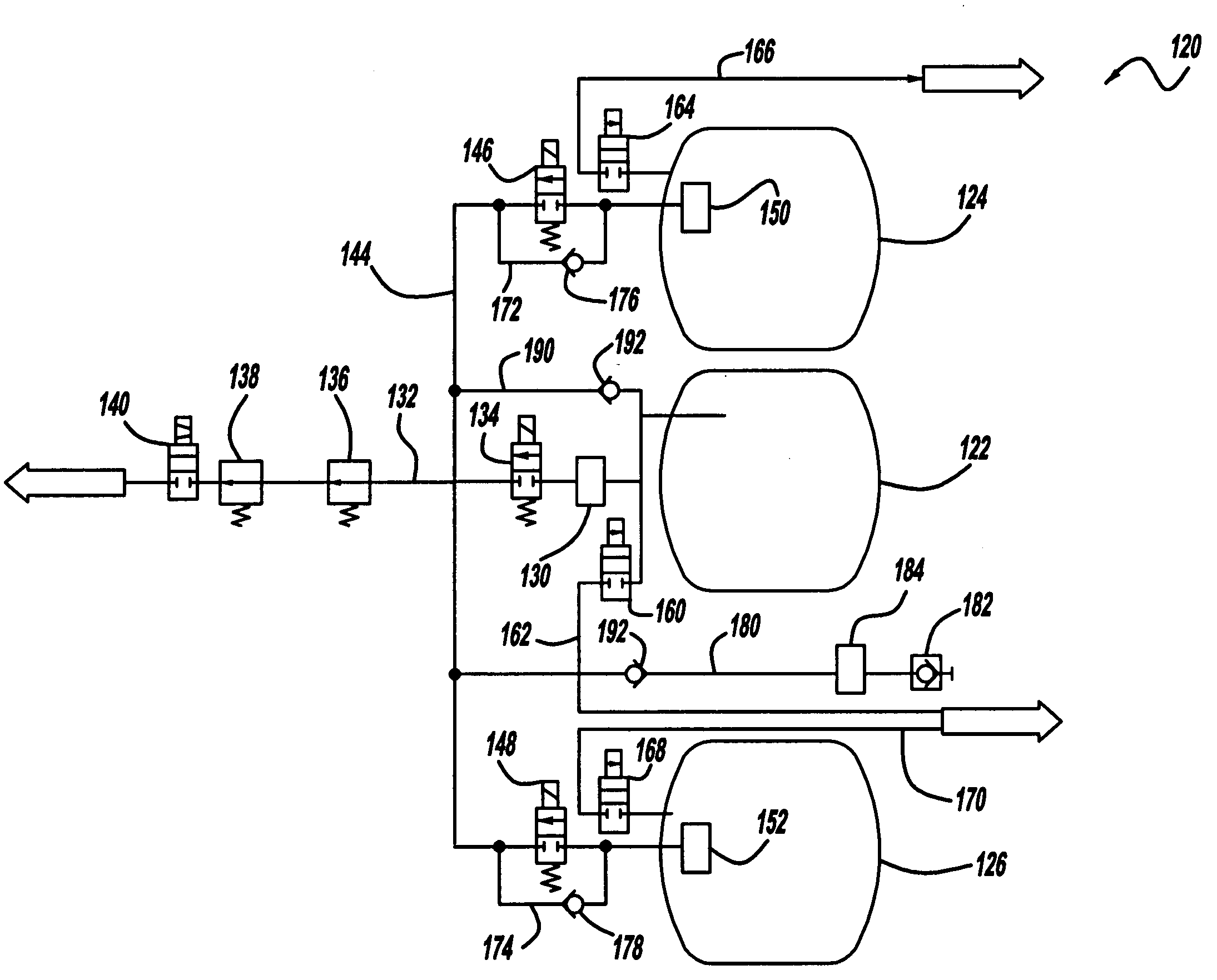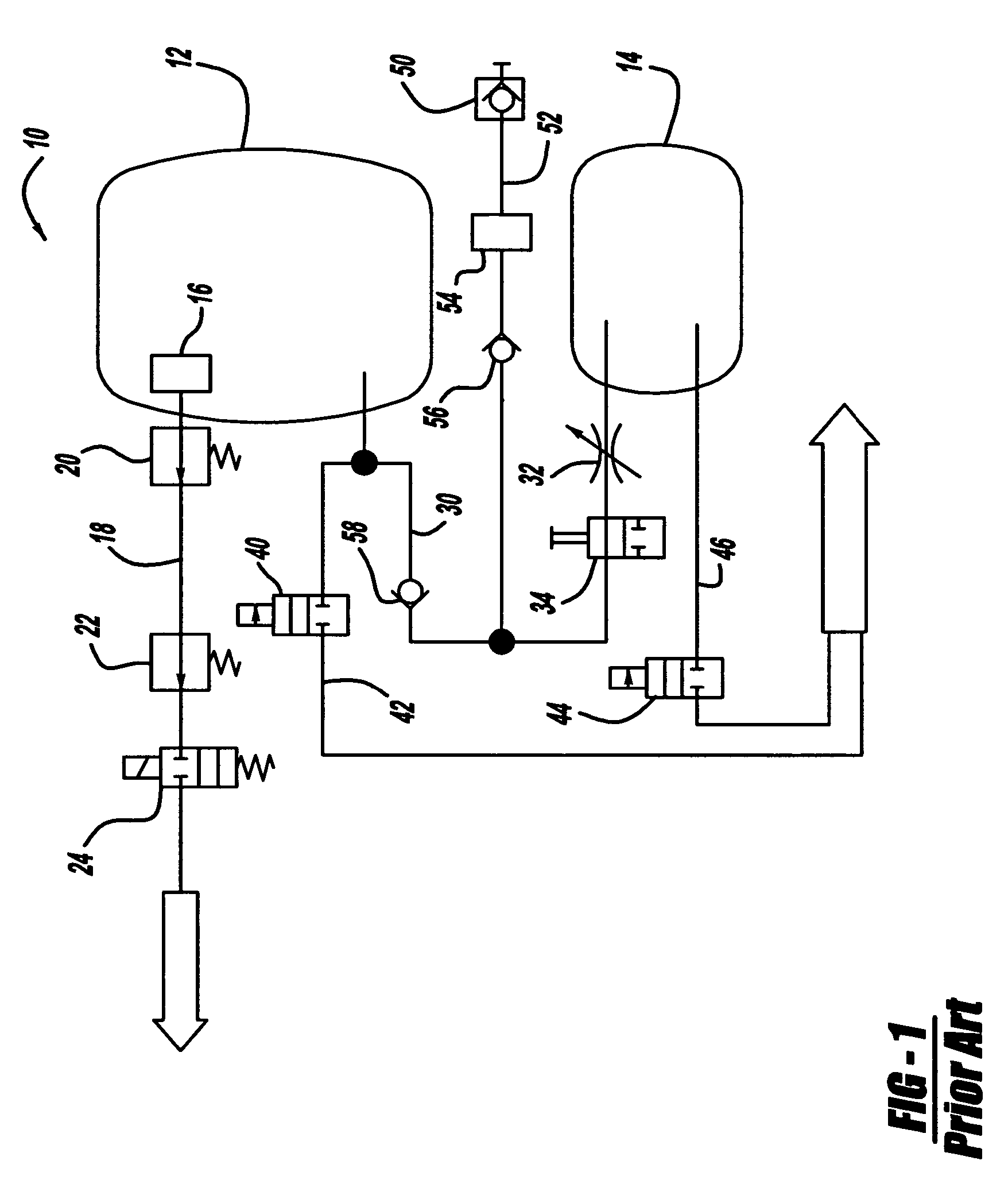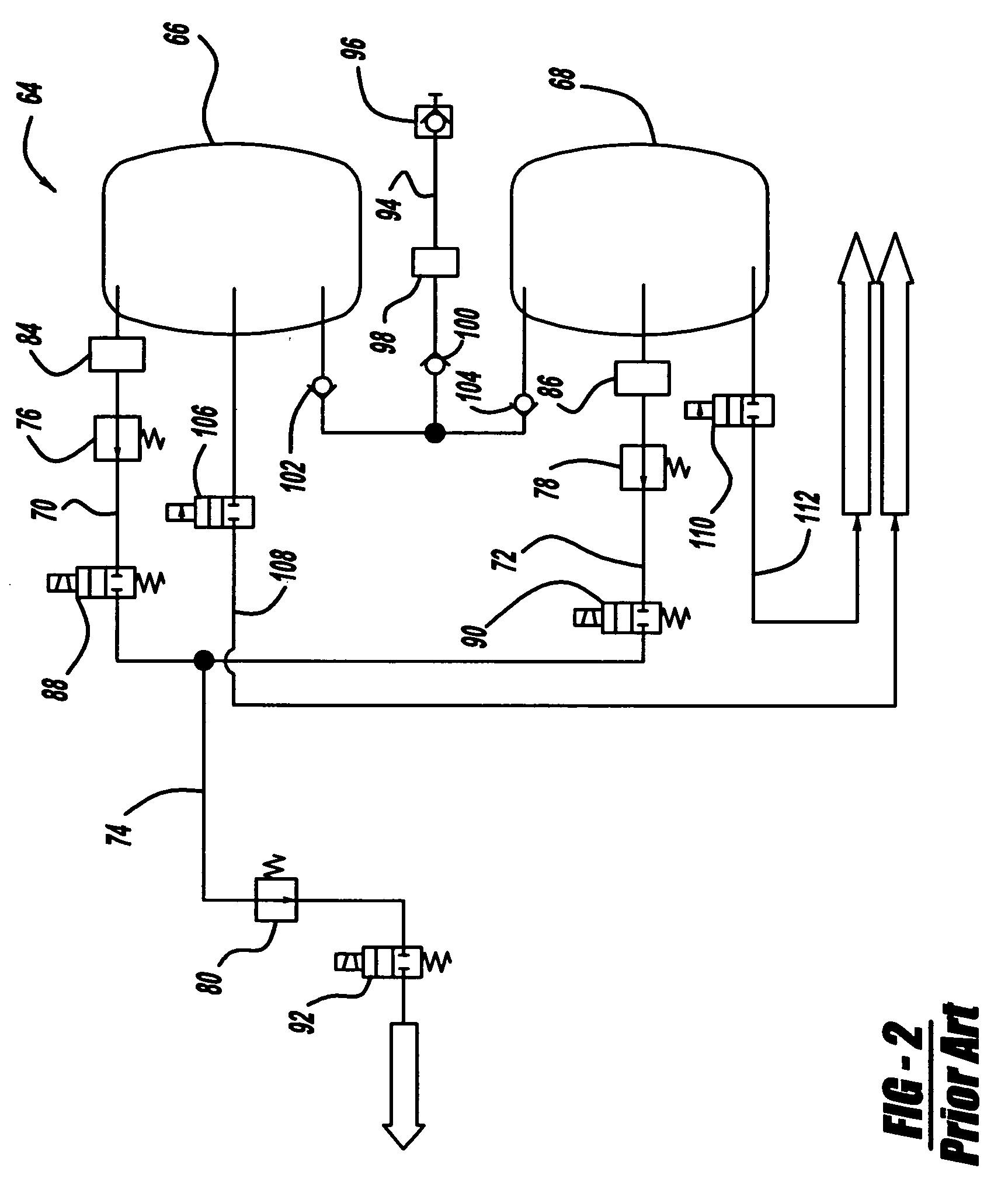Method of discharging high pressure storage vessels
a storage tank and high-pressure technology, applied in the direction of water supply installation, container discharging methods, electrochemical generators, etc., can solve the problem of automatic closing of the valve, and achieve the effect of minimal electrical energy
- Summary
- Abstract
- Description
- Claims
- Application Information
AI Technical Summary
Benefits of technology
Problems solved by technology
Method used
Image
Examples
Embodiment Construction
[0018]The following discussion of the embodiments of the invention directed to a master / slave tank system for storing a compressed gas is merely exemplary in nature, and is in no way intended to limit the invention or its applications or uses. Particularly, the discussion herein describes the tank system for storing compressed hydrogen gas for a fuel cell system on a vehicle. However, the tank system of the invention has other applications for storing other gases for other systems, including natural gas.
[0019]FIG. 3 is a schematic plan view of a master / slave tank system 120 including a master tank 122, a first slave tank 124 and a second slave tank 126, according to an embodiment of the present invention. The tank system 120 is similar to the tank system 10 in that the hydrogen gas for a fuel cell stack (not shown) is provided from the master tank 122, and the slave tanks 124 and 126 feed the master tank 122 to stabilize the pressure in all three of the tanks 122-126. The hydrogen g...
PUM
 Login to View More
Login to View More Abstract
Description
Claims
Application Information
 Login to View More
Login to View More - R&D
- Intellectual Property
- Life Sciences
- Materials
- Tech Scout
- Unparalleled Data Quality
- Higher Quality Content
- 60% Fewer Hallucinations
Browse by: Latest US Patents, China's latest patents, Technical Efficacy Thesaurus, Application Domain, Technology Topic, Popular Technical Reports.
© 2025 PatSnap. All rights reserved.Legal|Privacy policy|Modern Slavery Act Transparency Statement|Sitemap|About US| Contact US: help@patsnap.com



